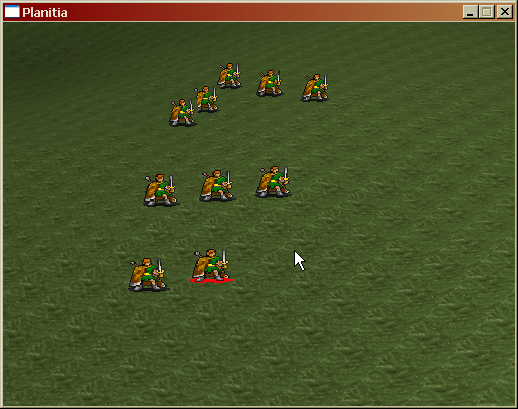Flee! The barbarian hordes approach!

Still no band-selection yet, but otherwise the interface should feel quite familiar to anyone who has ever played a 3D RTS.
To be honest, I kind of psyched myself out with my last post about Planitia’s design, and I did it with two words: world simulation. Planitia will require at least a basic world simulation, but I’ll be darned if I know how to do one, and unfortunately my perusal of the Game Programming Gems books and AI Game Programming Wisdom books have been disappointing When all of these books discuss AI they discuss pathfinding, line-of-sight, group movement – unit-based AI. When they do talk about RTS AI, it’s about creating an AI opponent for the player to fight against (which, granted, may come in handy).
Of course, while I consider what I’m looking for to be “AI”, other game developers may not. What am I looking for?
A world simulation consists of a system composed of interacting subsystems with emergent properties. Oblivion’s world was made of a system like this. So was Ultima VII’s. So was Powermonger’s. Thus you can see that such a system doesn’t require heavy CPU horsepower. It does require one to know where to start coding such a system.
Once again, my friend Tom Mauer comes to my rescue. In college he heard about discrete event simulation, a form of computerized system simulation that is really big in manufacturing and scientific industries but hasn’t really been used for gaming. The basic concept seems simple enough; I’m going to try it out on Planitia. If I get it working I’ll probably write up an article on it.
